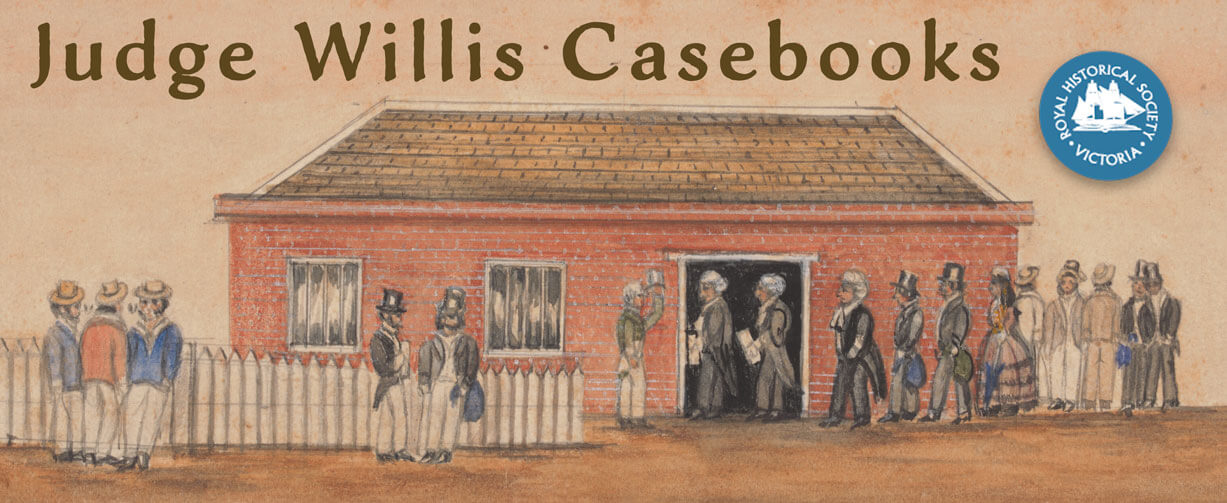
Judge Willis’ Judicial Abilities
People who encountered Mr Justice Willis at the time, and historians who have written about him later, generally agree that Willis was an able judge. He was well-read and had a good memory. He provided background briefings on legal matters for governors and the Colonial Office and published three legal textbooks and one treatise on the government of British colonies. His addresses to the jury were erudite and carefully constructed, combining history, quotations from the classics and current political commentary.
Yet these qualities have been largely overlooked in the depiction of him as an irascible and erratic judge. So why did his judicial temper and behaviour on the bench attract so much attention?
Factors Amplifying Willis’ Presence & Flaws
First, there was the difference in political life between Sydney and Melbourne that gave extra prominence to Judge Willis’ activities in Melbourne. In Sydney he was one judge on a bench of three, so attention on events in the courts was split three ways. Moreover, in Sydney, the interest of the press was diverted by political wrangling surrounding the Governor and the policies of the imperial government, most especially in relation to the Legislative Council.
In Melbourne, by contrast, Mr Justice Willis was the only Supreme Court judge, presiding over all Supreme Court cases as well as Quarter Sessions hearings. In the absence of any other form of spectacle, reports of court cases were the mainstay of the newspapers, filling column after column to an extent not seen in the Sydney papers. Once the Melbourne Town Council was elected and operational by late 1842, it created an alternative political and civic sphere for journalists to write about. Although the newspapers continued to report Willis’ performance in the court, especially as it became more politically contentious and erratic during 1843, he was no longer the only story in town.
Second, in a relatively small, face-to-face society, Willis was a visible presence on the Melbourne streets. Although he lived some eight miles out of town in Heidelberg, he rode into Melbourne nearly every day. He attended St James Church; he walked nearly every day to the site of the new Supreme Court building to inspect progress; he visited the shops and spoke with the storekeepers, and there are reports of him gossiping with friends in the street.
Moreover, the rule of law and its place in society were, on occasion, played out in ritual performances on the streets, witnessed by large numbers of Melbourne inhabitants. In the laying of the foundation stone of the new courthouse, Justice Willis was the central figure. The parade that marked the occasion included a large number of civilians as well as officials. Freemasons, the local religious leaders, and the schoolchildren of the town all marched in the parade, cheered on by the largest crowd gathered in Melbourne to that date.
Crowds gathered again on three separate occasions to witness the public executions of six men during 1842. Three of the executions involved Aboriginal men: Tunnerminnerwait (‘Jack’) and Maulboyheener (‘Robert’) in January 1842 and Figara Alkepurata (‘Roger’) in September the same year. On 28 June 1842 the three Plenty Valley bushrangers, Fogarty, Ellis and Jepps, were also executed. These six executions, all under the sentencing of Judge Willis, no doubt underlined the power and authority of the rule of law, and Willis in particular as its figurehead. However, their clustering within a ten-month period, while striking for those who witnessed them, did not necessarily mark Willis out as a particularly harsh judge. Prior to Willis’ arrival in Port Phillip, all capital sentences were passed and carried out in Sydney, and for three years after his departure, the judges who replaced him on a temporary basis were reluctant to pass death sentences until Willis’ dismissal was officially confirmed. Nonetheless, these very visible rituals of justice kept Judge Willis and his court at the centre of public awareness.
Third, the economic depression of the 1840s made the judge and the court even more prominent. Many merchants and landholders became insolvent, and the collapse of the informal system of promissory notes brought many people into contact with the courts, either as signers or recipients. Some saw Willis’ court as a protection for the innocent and unwary, and as a means of exposing and punishing financial chicanery. Others saw it as an arena for exposure and embarrassment, with Judge Willis engaged on his own political crusade. People, who may have previously looked on Willis’ performance in the court with detached and even amused interest, knew that in such turbulent financial times, they might themselves come under the purview of the judge.
Public Interest In Willis’ Troubles
So, it is perhaps not surprising that Justice Willis’ dismissal prompted such discussion and political action. Meetings were held; placards plastered the town; and a string of petitions, both for and against him, were signed. Two petitions, one numbering 674 signatures and another with 700 signatures were signed in opposition to him. However, these were dwarfed by two petitions in his favour signed by 1081 and 1615 people respectively. Only men signed petitions, and even allowing for people signing consecutive like-minded petitions twice, this is still a remarkable level of public interest. Possibly the great majority of adult males in Melbourne signed a petition for or against Willis. It demonstrates, too, how divisive Willis’ performance as judge had been in a small community.
In 2014, The Judge Willis Casebooks website was developed with support from the Wilson Trust & His Honour Paul R Mullaly QC. The website was created by Jason Odering. In 2018, the RHSV website was rebuilt and the Judge Willis Casebooks have been reconstructed with respect to the original layout and design. Judge Willis Casebooks: Terms of Use

 239 A'Beckett Street Melbourne, Victoria, 3000
239 A'Beckett Street Melbourne, Victoria, 3000  03 9326 9288
03 9326 9288  office@historyvictoria.org.au
office@historyvictoria.org.au  Office & Library: Weekdays 9am-5pm
Office & Library: Weekdays 9am-5pm

